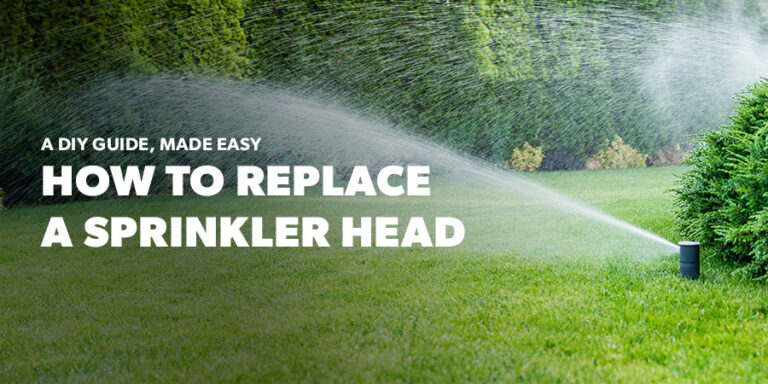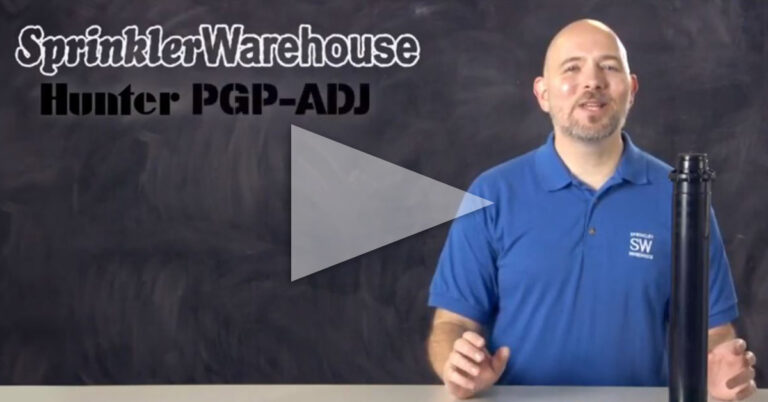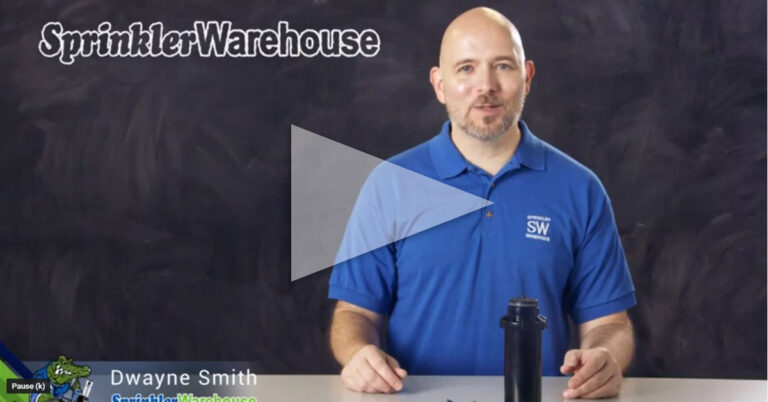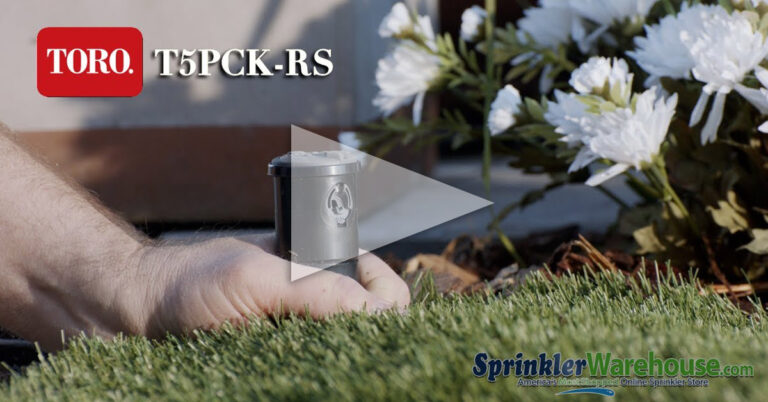What Is The Best Type Of Sprinkler System For You?
This article discusses the different types and uses of sprays, rotors and impact sprinklers. Sprinkler heads come in a variety of sizes, shapes, models, and brands. However, most of these variations fit into four main categories:
- Pop-up sprinkler heads
- Impact rotors
- Gear-driven rotors
- Large turf rotors
Pop-Up Sprinkler Heads
Pop-up sprinkler heads are the most popular kind because they work well in residential and small commercial sprinkler systems. There are two types of pop-up heads including stationary sprays and rotating heads (rotors).
Pop-up sprinkler heads supply a continuous stream of water through a nozzle. These nozzles come in patterns such as full arc, half arc, and a quarter circle. Nozzles come in different spray patterns to fit the contours and size of the landscape. Other than a pop-up stem, pop-up spray heads are stationary and are simple to operate.
Pop-up sprinkler bodies range in height from 2 to 20 inches. Two-inch pop-ups are common in areas with tough soil where digging is difficult. Use four-inch pop-ups in turf areas. The current standard for mowing height in lawn areas is about three inches. In other words, a four-inch pop-up provides sufficient clearance for a growing lawn and for sinking. It is common for sprinkler heads to settle over time as soil and thatch build up around the sprinkler head. Six to twelve-inch pop-ups are good to irrigate ground cover, gardens, and shrub borders. Similarly, risers can raise the height of spray heads as the landscape grows. This allows for greater clearance as needed.
Pop-up spray heads cover small areas with spray radii between 3 and 15 feet. The operating pressure is between 15 and 30 psi. The precipitation rate of fixed spray heads is dependent on system pressure, spray head spacing, manufacturer specs, and nozzle size, and varies from 1 to 2.5 inches per hour.
Manufacturers are continually improving pop-ups. These features have helped contribute to sprinkler efficiency.
- matched precipitation rates
- adjustable low trajectory nozzles
- nozzles with square spacing and strips
Several manufacturers have developed nozzles that convert a pop-up spray head to a rotor. As a rotor, it is now capable of covering distances ranging from 8 to 30 feet. The advantage of these nozzles is that they reduce the precipitation rate. In turn, this improves water absorption and reduces run-off.
Impact Rotors
Impact rotors provide various stream patterns to the landscape. They distribute water in an arc pattern typically ranging from 40 to 360 degrees. They cover a larger area than a pop-up spray head would. The spray radius for most rotors is 20 to 150 feet with a precipitation rate between 0.1 to 1.5 inches per hour.
There has been little change in the design of impact rotors over the years. The simple design makes it suitable for areas with well water or where other types of heads might get gummed up by hard water. The radius and arc are easily adjusted. However, they require regular maintenance and the spring mechanism is often too noisy for residential sites. Impact rotors tend to be more expensive because they are made of bronze or brass. However, they can last for years and have a longer field life than plastic rotors.
Gear-Driven Rotors
Gear-driven rotors are used for medium- to large-scale sprinkler systems such as small commercial sites or large residential areas. Their low cost, quiet operation, and versatility are a few of the advantages that gear-driven rotors have over impact rotors. They typically require less maintenance because the enclosed body design prevents clogging of the drive mechanism from dirt and other debris.
They work better than pop-up spray heads in areas with slopes or clay because their lower precipitation rate increases water absorption.
Gear-driven rotors use nozzles, and it is becoming more and more common for manufacturers to provide a nozzle tree with each of their rotors. This makes it easy to select the appropriate size nozzle for the desired radius and precipitation rate. Typically, gear-driven rotors have a radius that ranges from 18 to 55 feet and an arc rotation from 40 to 360 degrees. Operating pressures range from 25 to 75 psi and precipitation rates range from 0.2 to 0.8 inches per hour depending on the pressure, nozzle size, and the layout of the zone.
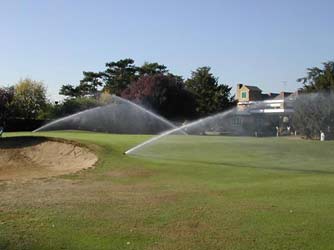
Large Turf Rotors
Golf courses, parks, and some commercial properties require large turf rotors. These rotors require an operating pressure of 50 to 100 psi and can cover radii up to 100 ft. with flows as high as 80 gallons per minute. Older model golf course heads are made of brass. Some of these heads are still operating in the field 40 years after they were originally installed. The high cost of brass heads has made plastic heads a common choice.
One of the major differences between the sprinkler heads used for residential and small commercial irrigation versus large turf rotors is their actuation. On smaller sites, sprinkler heads are laid out in a block formation. Several heads are activated at one time when either a manual or electric valve is opened. The high flows and flexibility required on large sites make this type of layout cost-prohibitive. Instead, most large turf rotors use either electric valve-in-head (EVIH) or hydraulic actuation. EVIH actuation generally has fewer problems than hydraulic activation and is the most common actuation system for large-scale applications.
Industry Innovation In Sprinkler Systems
The highly competitive irrigation manufacturing market benefits homeowners, landscapers, and other irrigation professionals. For instance, this competitive market continues to produce design improvements and innovations, increasing the durability of sprinkler heads and reducing costs. Advances in nozzle design decrease overspray, runoff, and wind dispersal.
In conclusion, knowing the conditions and requirements of the site. It’s an important step in finding the right sprinkler head for the job. Soil type, water pressure, water source, and weather conditions are just a few of the many factors that affect sprinkler head selection. After acquainting yourself with these factors, familiarizing yourself with the four basic designs of sprinkler heads will have you well on your way to making an informed, cost-effective selection for your sprinkler system.
























